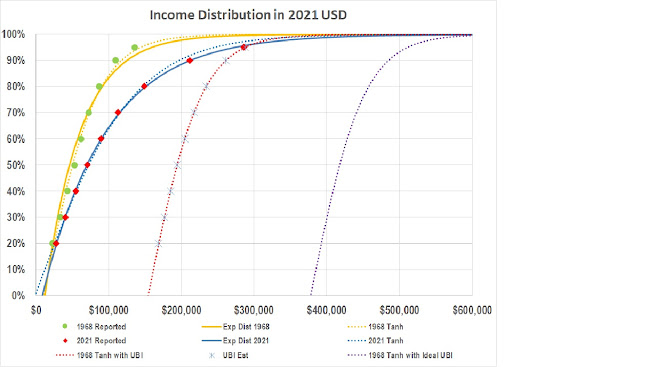It’s A Wonderful
World
I hear babies cry
I watch them grow
They'll learn much more
Than I'll ever know
And I think to myself
What a wonderful world
Yes, I think to myself
What a wonderful world
If we knew
how to treat growth, it could be a Wonderful World
In the movie It’s a Wonderful Life, George Bailey, played
by Jimmy Stewart, gets to see the nightmare of Pottersville which replaces his
beloved Bedford Falls. Pottersville is a
horrible place where people only look out for themselves, instead of looking out
for each other. The world seems to be
living that movie, but I am afraid that we are living in Pottersville.
When dealing with growth you can either increase the variance within, or increase the median of, the group. In
today’s United States, we seem to have chosen the path of living in Pottersville by only increasing the
variance, not increasing the median. The
relationship to an absolute is defined by an exponential distribution. The relationship to others in a group is NOT defined
by an exponential distribution. It is
defined by a normal logistics distribution, whose cumulative distribution function
is a form of a hyperbolic tangent. The mistake
is by treating each other like absolutes, instead of like individuals, it squanders that growth, which effects even those
who seem to have benefited from that growth.
The United States economy, stated in 2021 inflation adjusted dollars, has grown from an annual income of $3.5 trillion in 1968 to $15
trillion in 2021. However by insisting
that the median of the group (which again should considered to be individuals,
not an absolute) be zero, ( $0 at 0%, which is in fact 50% of the group) the distribution
of total income, and the amount of total income that could spur future growth, is concentrated in only a few. However if
just a fraction of that growth had been used to increase the median of the group,
which amounts to a median public expenditure of $142,000 per household, which
is called Universal Basic Income, UBI, in the figure below, the distribution of
income to the top 5% would be the same, but the distribution of income to the group
would increase dramatically. If ALL of
the growth in taxes had been used to increase the median of the group, which would be the ideal, then every income group would benefit.
This would amount to a public expenditure of $367,000 per household, but
that is only 2.15% of the total growth in taxes, if taxes were at a median of
20% of the total growth.
Growth of the group should be used to benefit the group,
not just a few in the group. If the response
is only to increase the variance of the group, then the group suffers, which means that even upper income households of the group suffer. Let’s instead live in a Wonderful World.

No comments:
Post a Comment